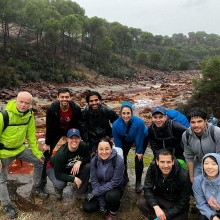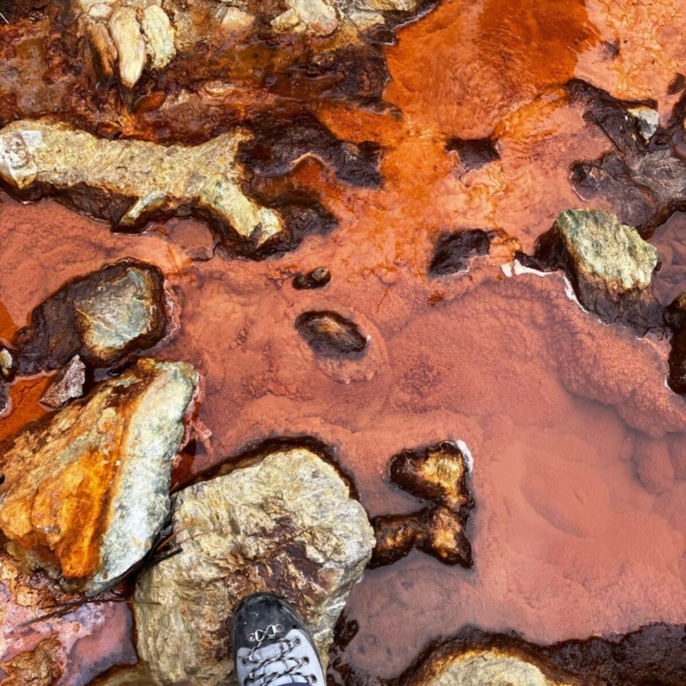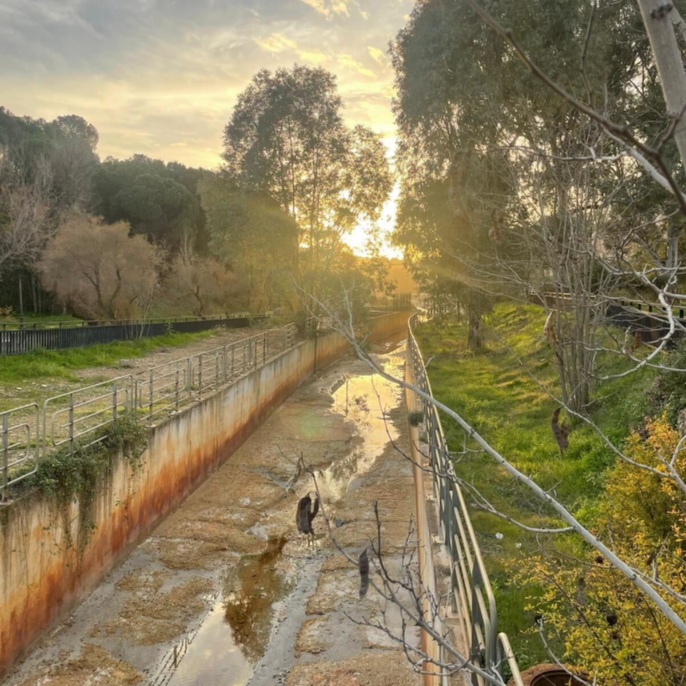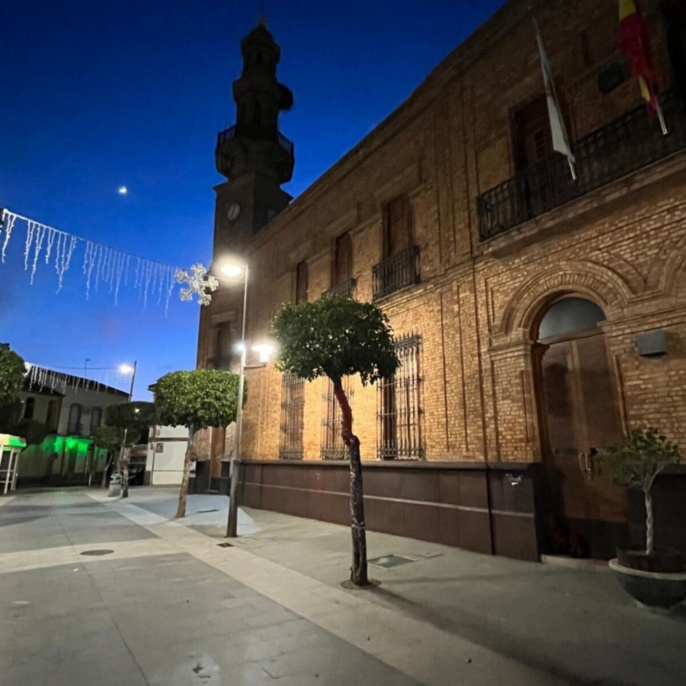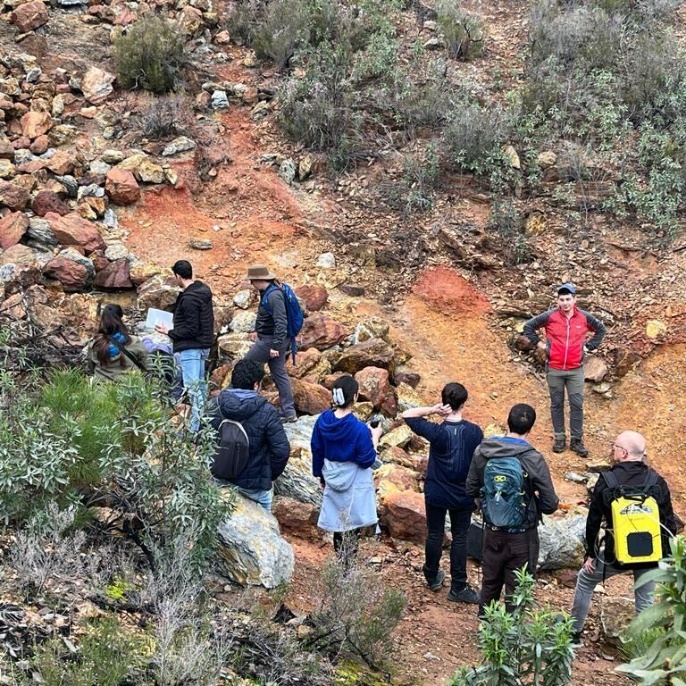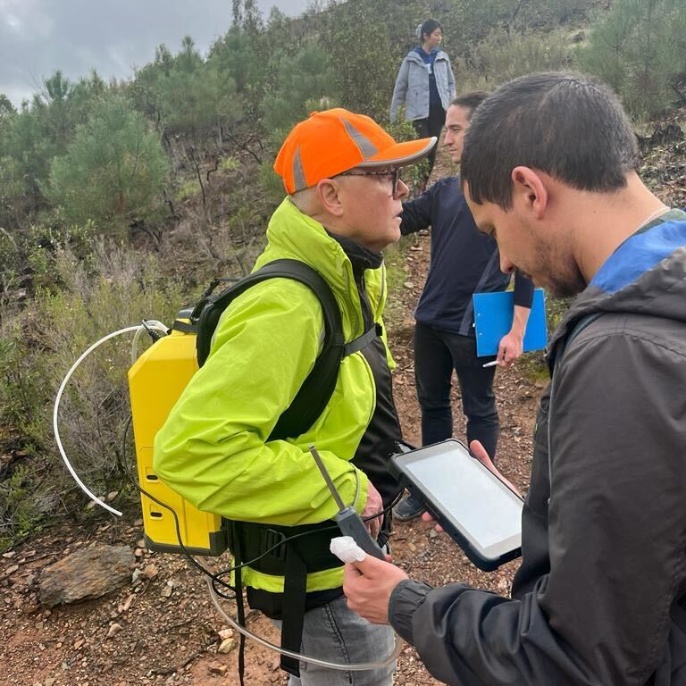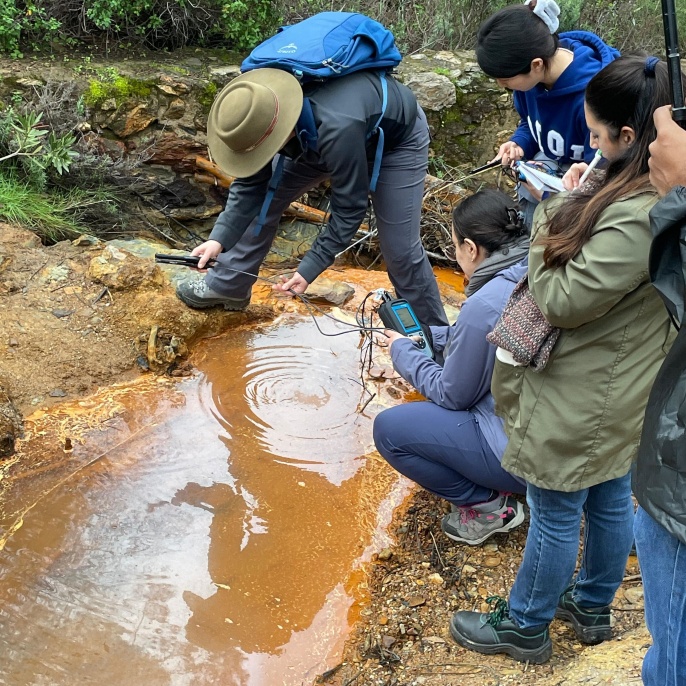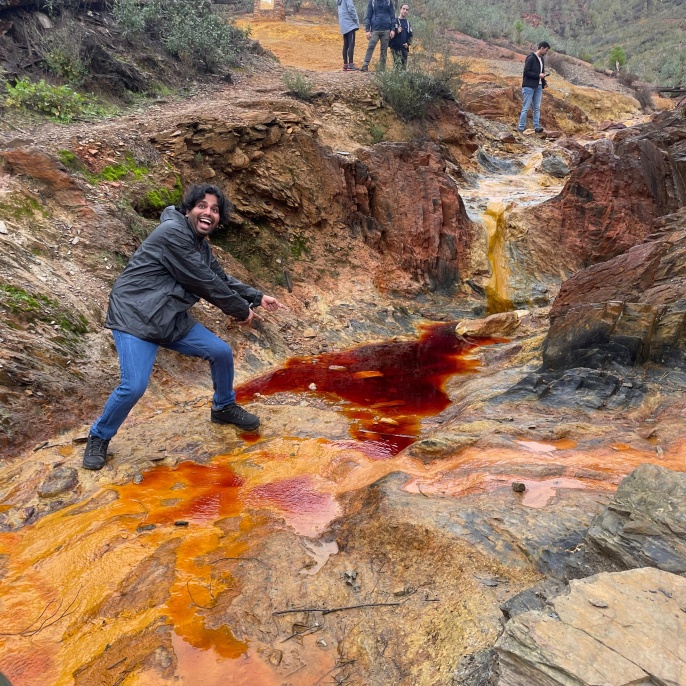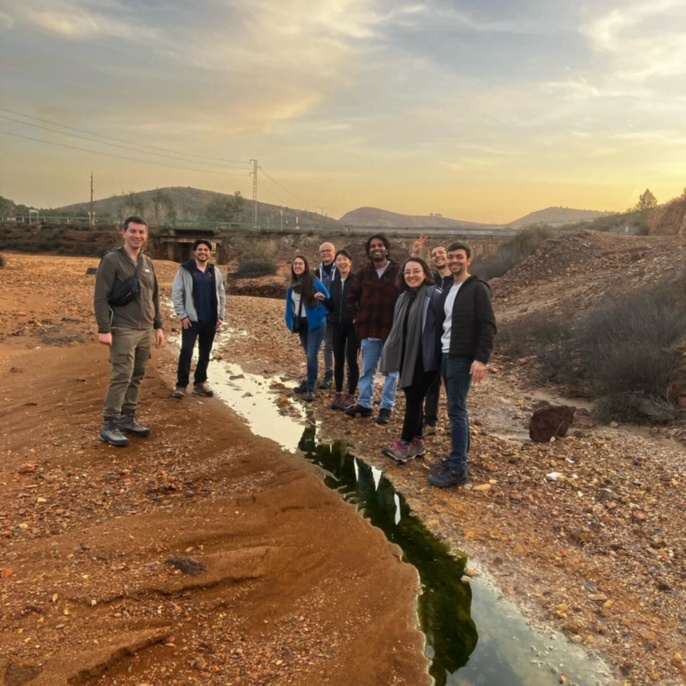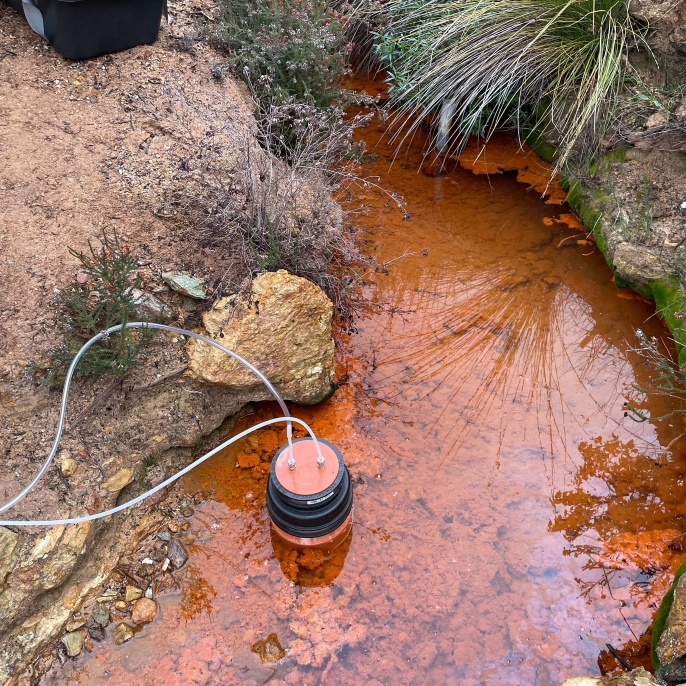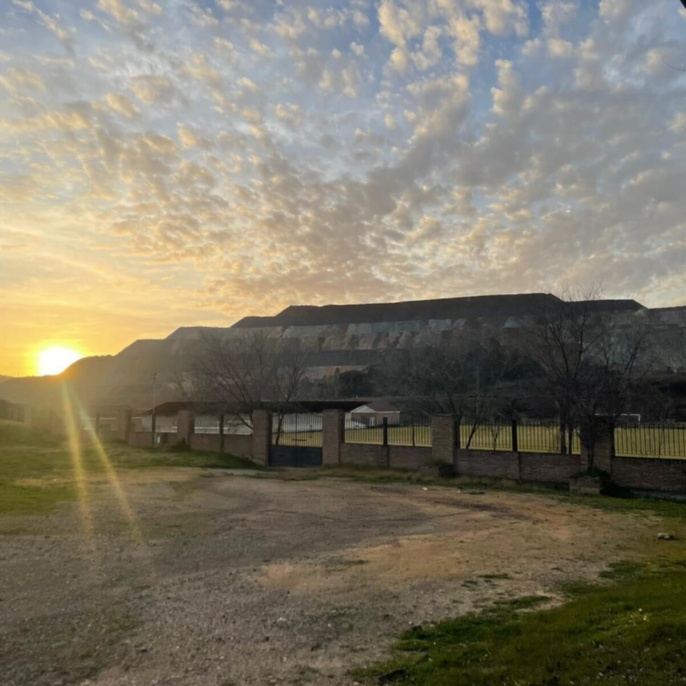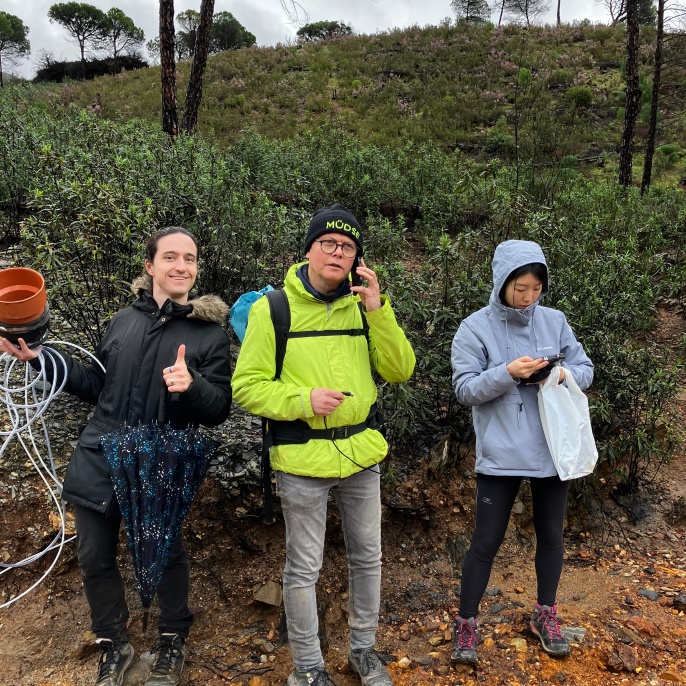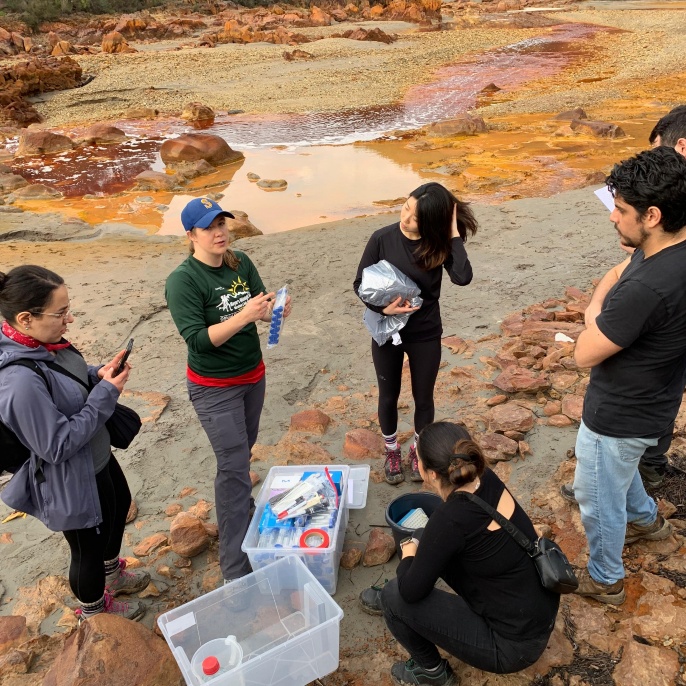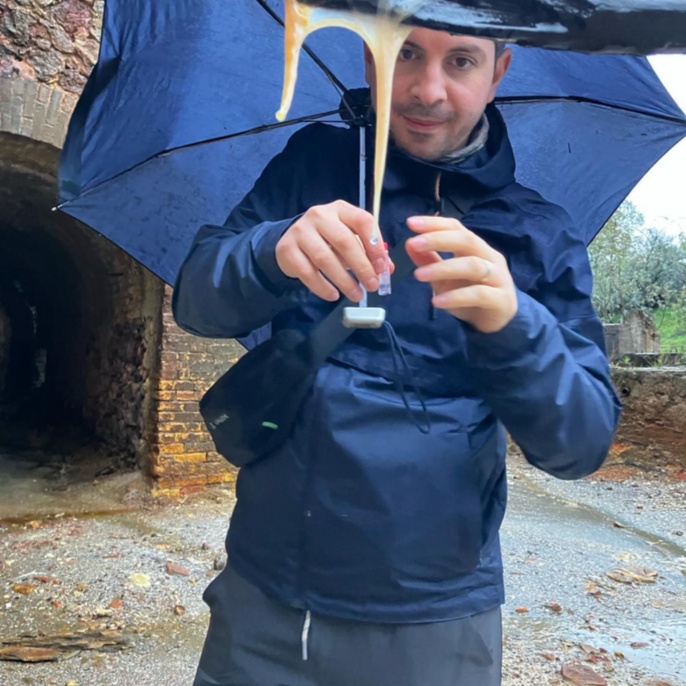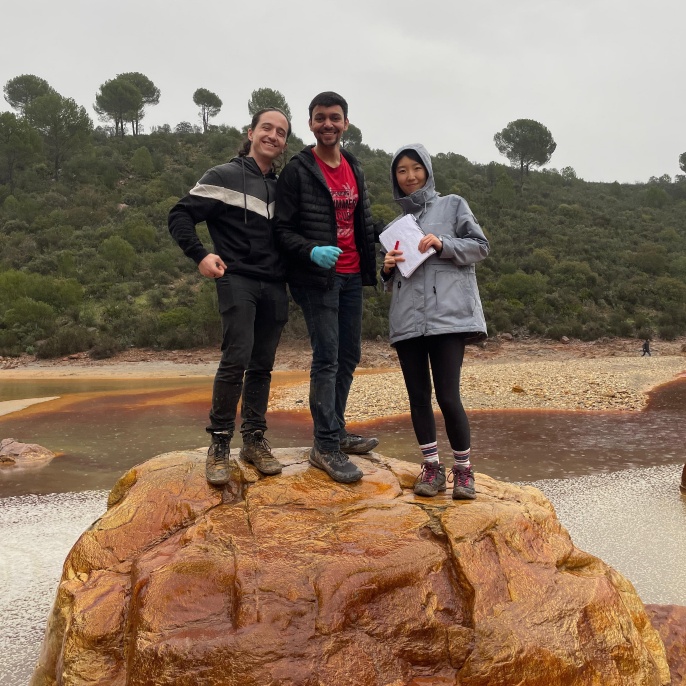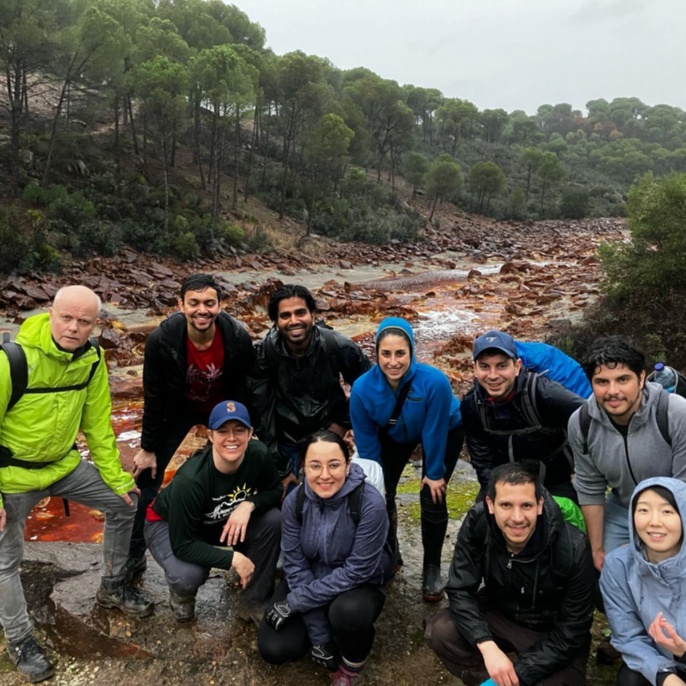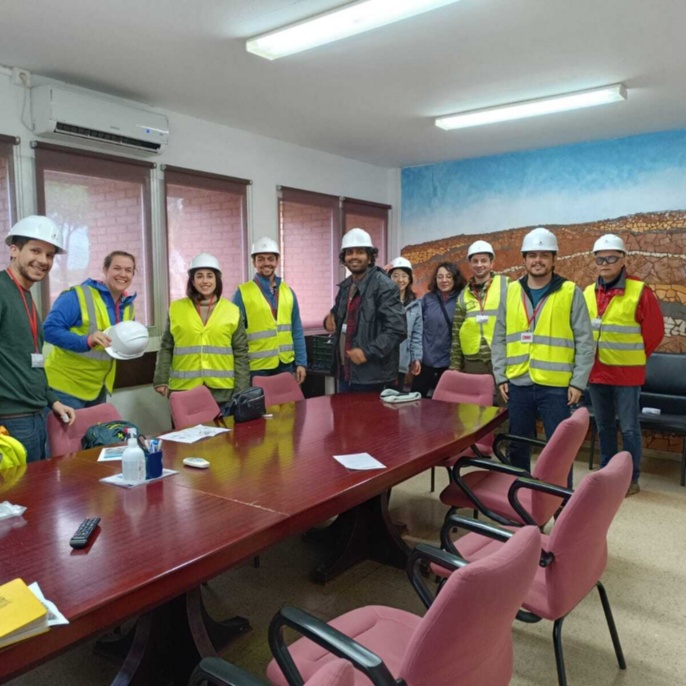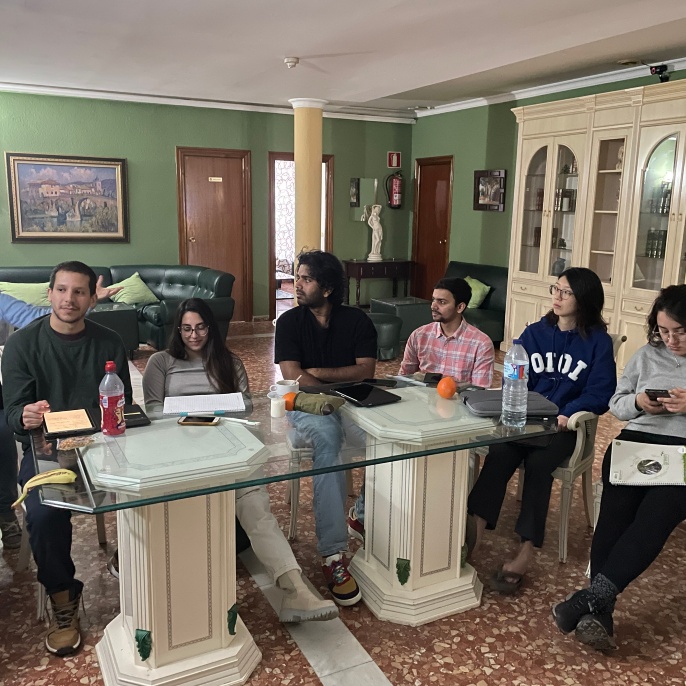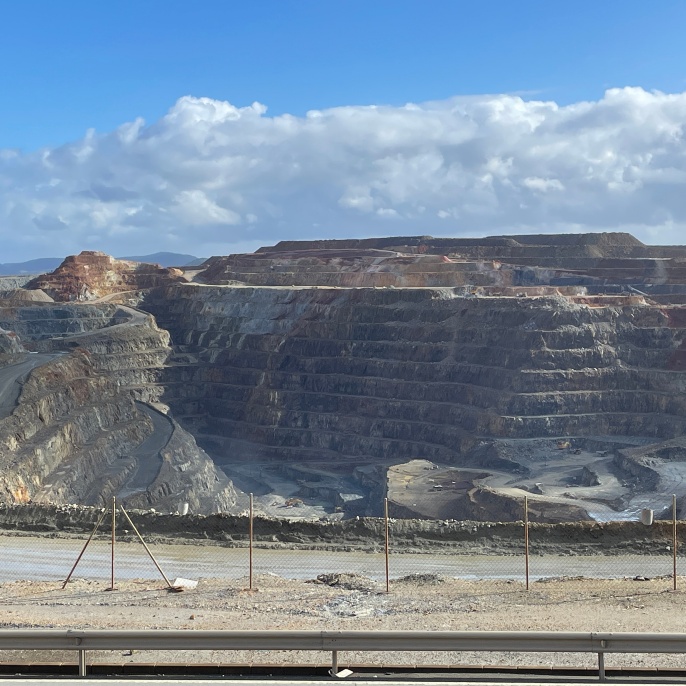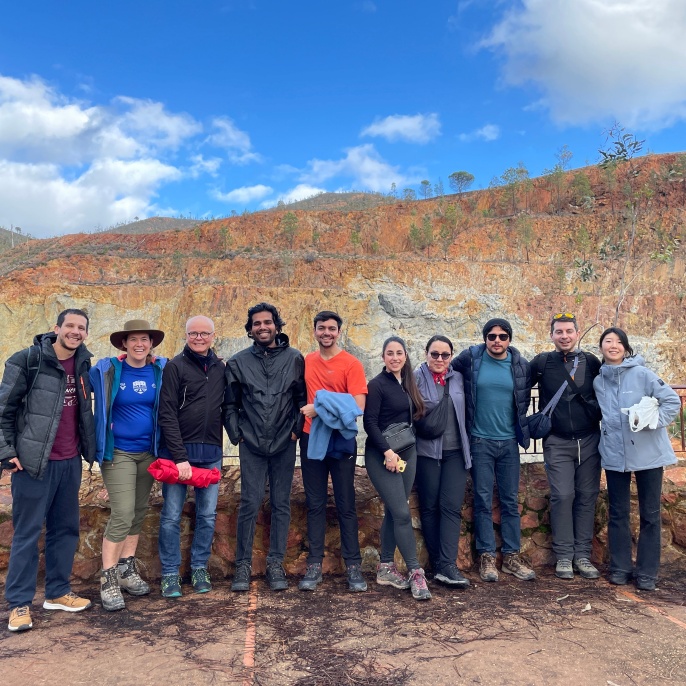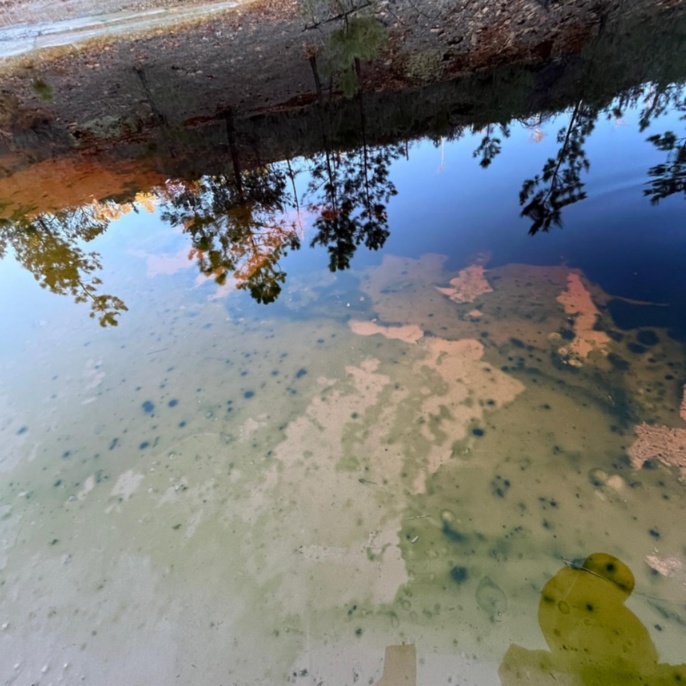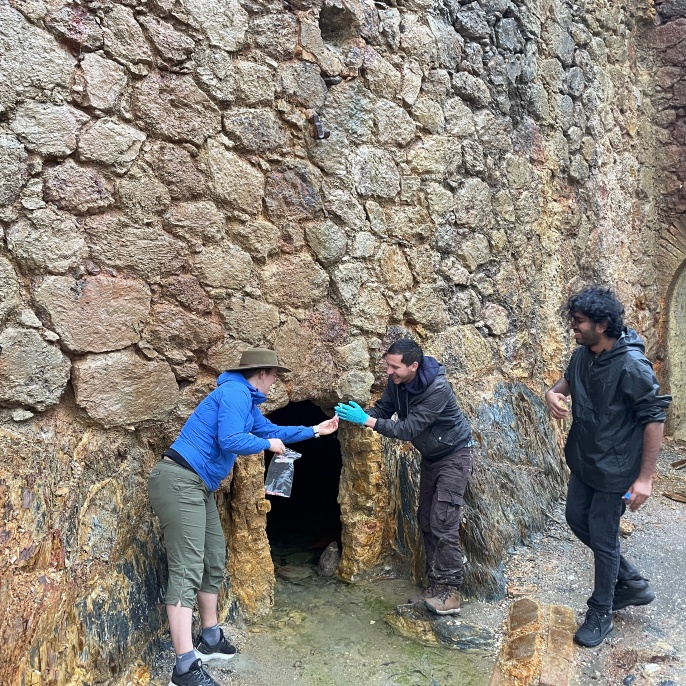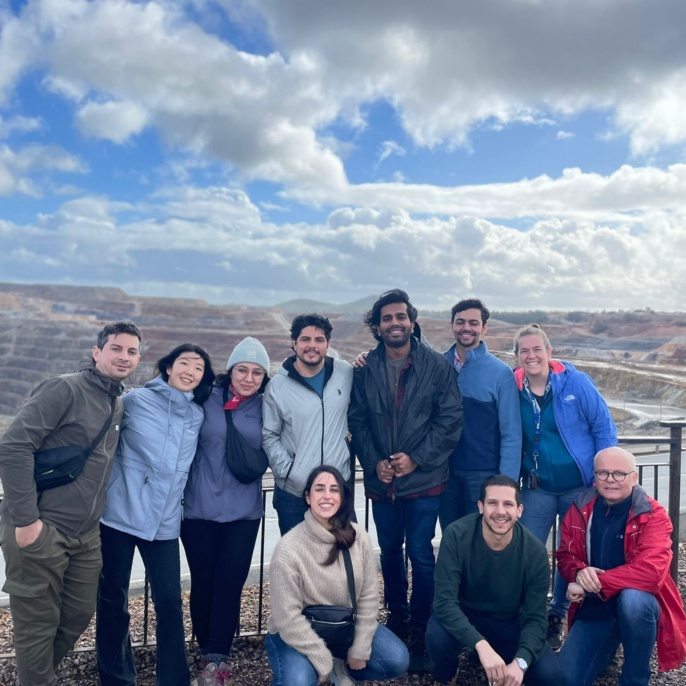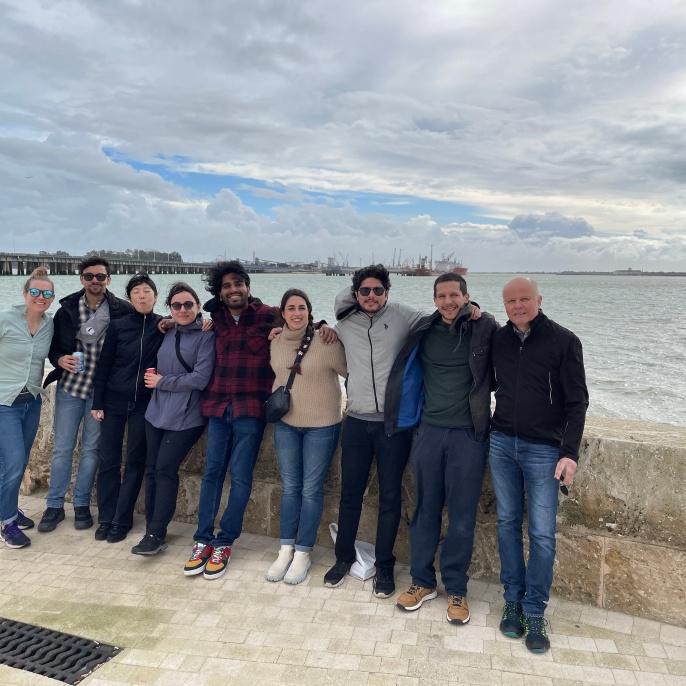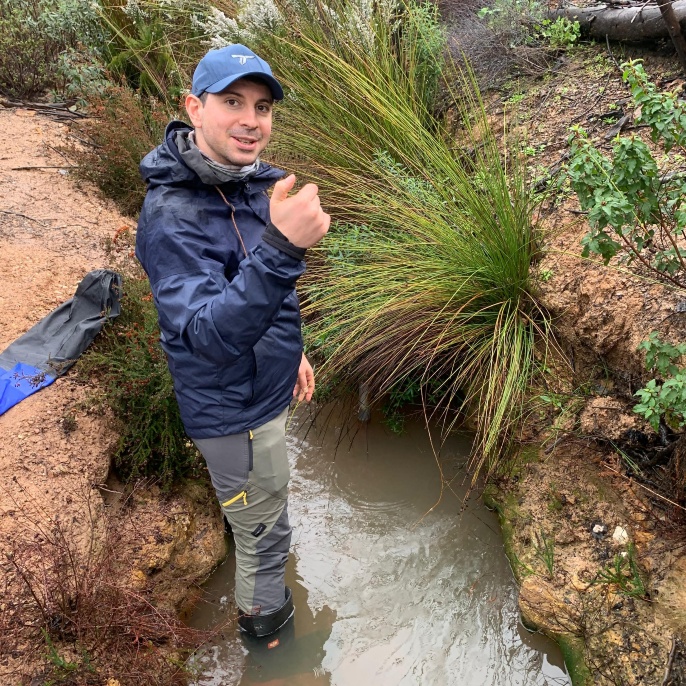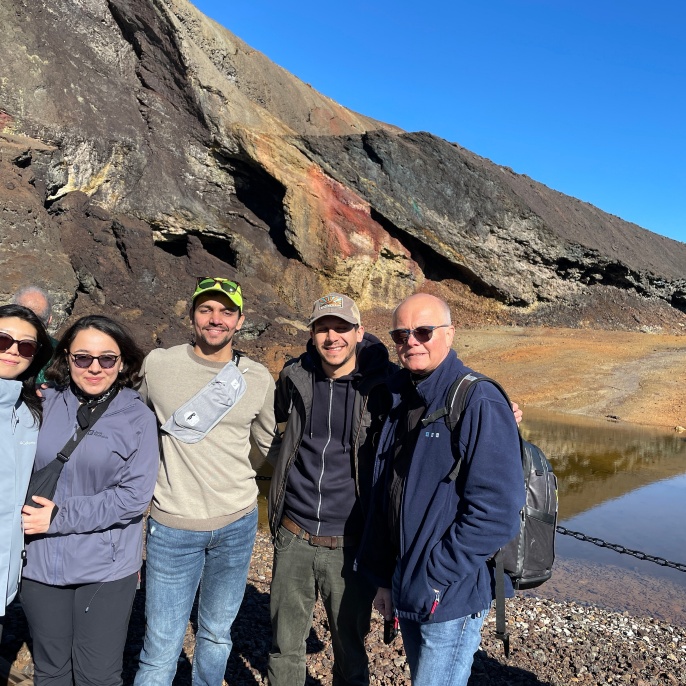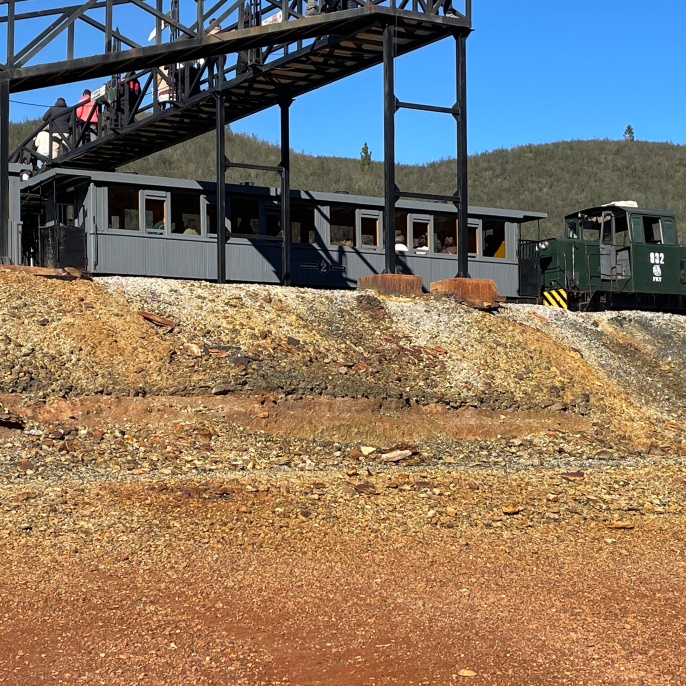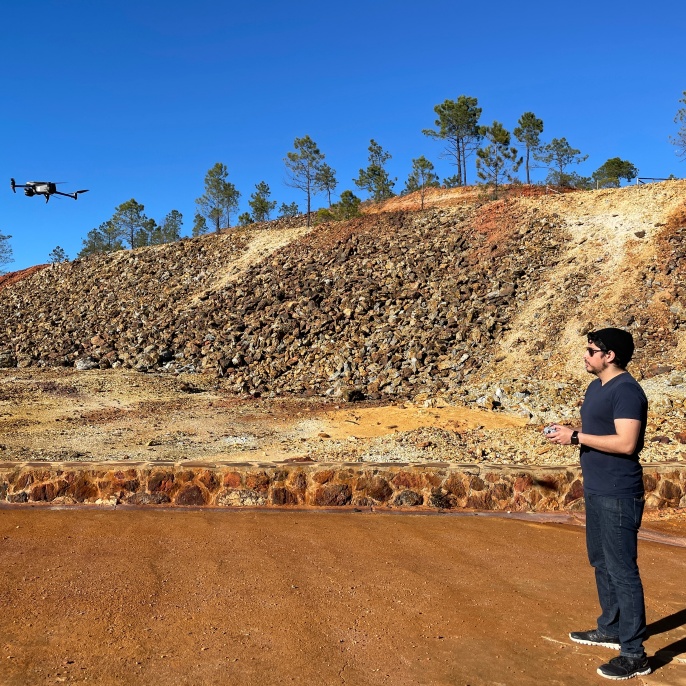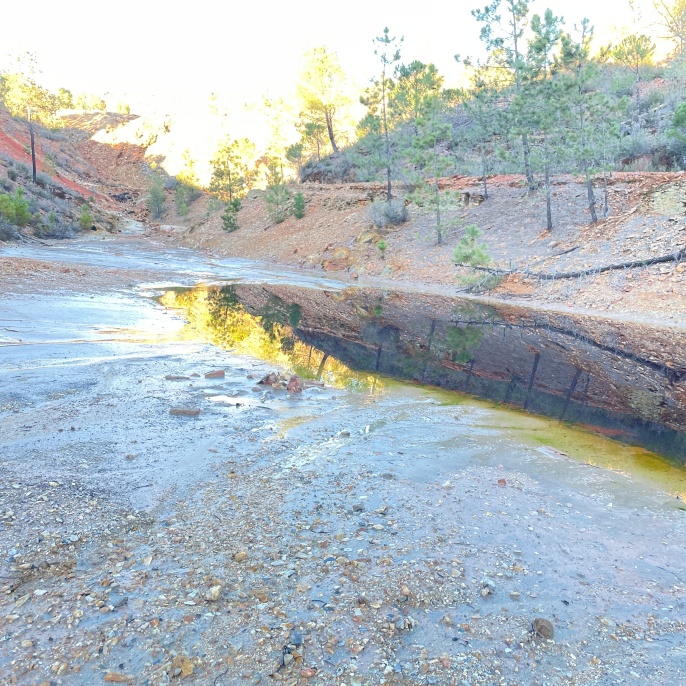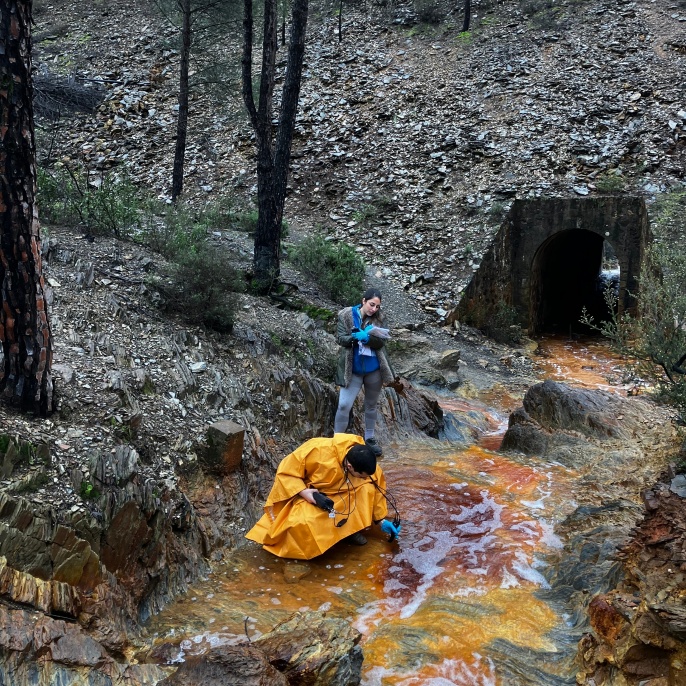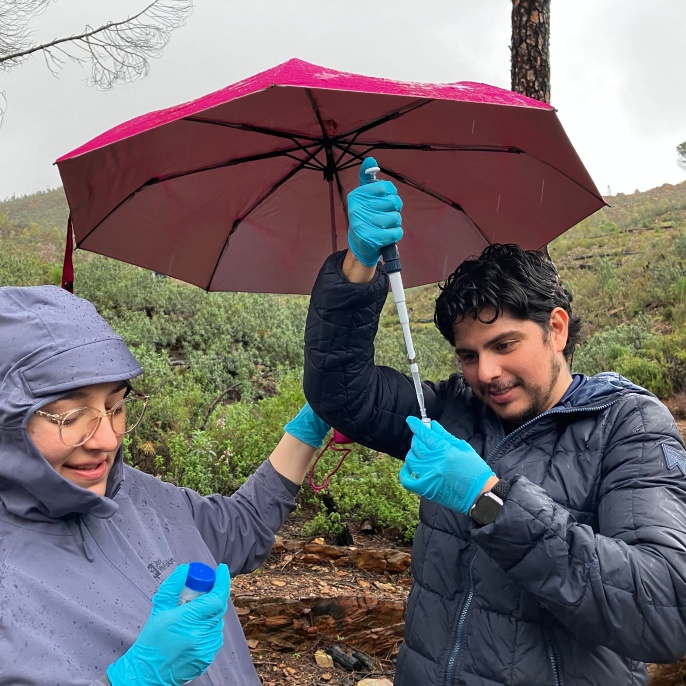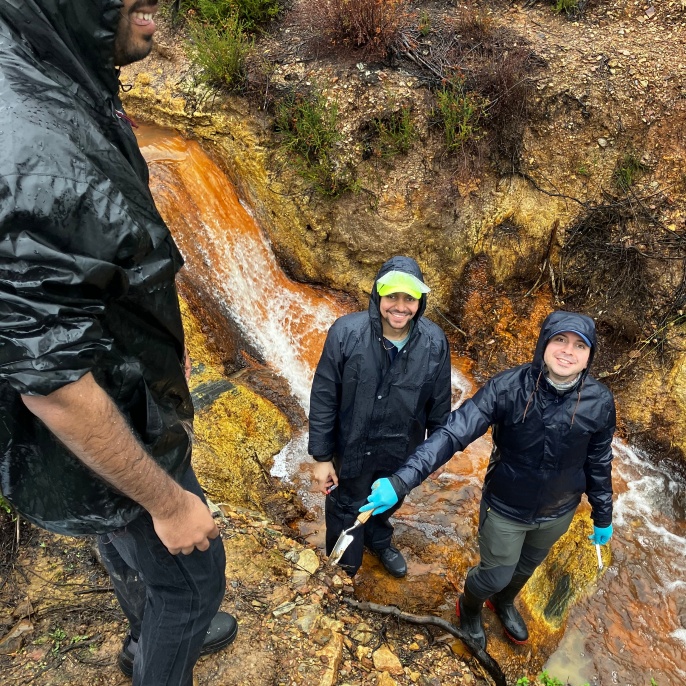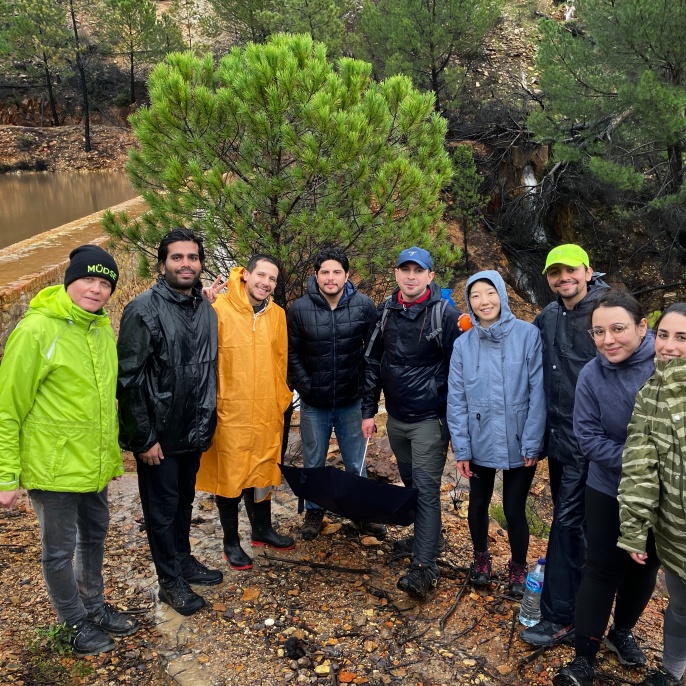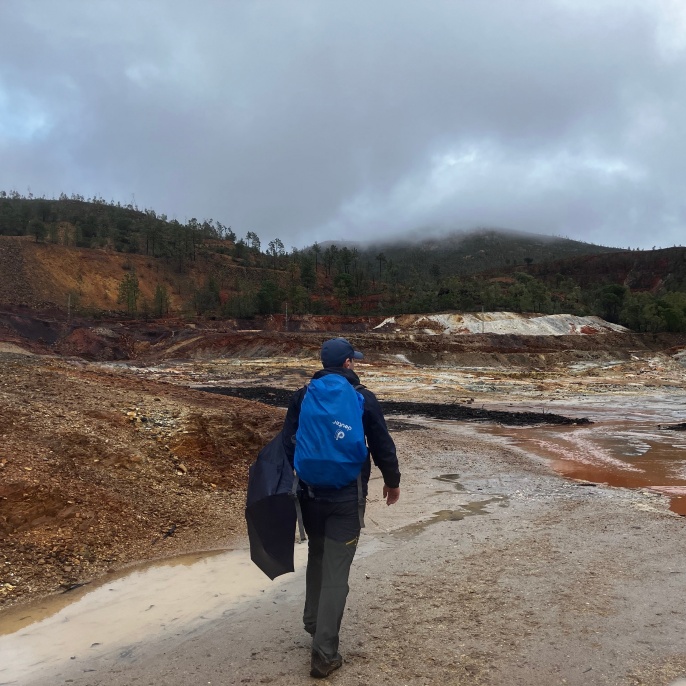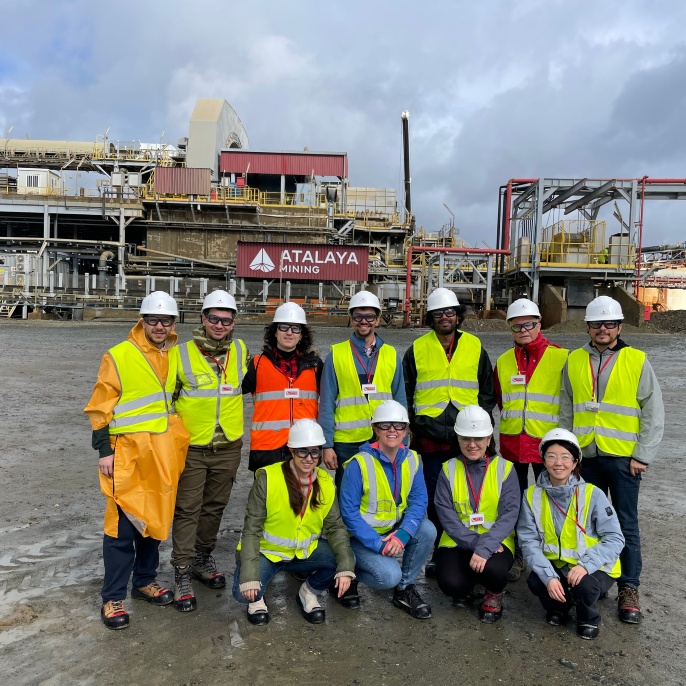What our students think:
Anaan Mohamed
Being part of this amazing field trip, and spending the new year learning about the Rio Tinto as well as getting hands-on experience in the field has been a truly rewarding and exciting experience. The incredibly impossible vibrant red river (with a ton of heavy metals and very low pH) still seems like a page out of a fictional movie, despite the fact that I have been and have touched (with gloved hands) the river itself.
This experience has allowed me a more in depth knowledge about the microorganisms in the Rio tinto and other similar rivers. Learning about the acidophiles and other organisms which can survive in extreme environments shed more light into the early life on earth and potential life in Martian environments, and honestly has left me in awe in the resilience of microorganisms.
Furthermore the field experience as well as other knowledge which I have gained from this field trip will undoubtedly help me in my career.
I am excited and am looking forward to help processing of the data samples and learning more about the microorganisms and their capabilities. Furthermore I am keen to explore and learn how they impact the Rio Tinto and what role they play in the environment
I would like to thank Dr. Sergey Abramov, Dr. Katharine Thompson and Dr. Martin Reiser for this incredible opportunity, the tireless answers to our long list of questions and also the meticulously planned field trip.
Jenish Zalaria
We come across various case studies somewhere or the other during the course of our studies as an engineer especially when one comes from environmental engineering background. To our surprise, who know we were actually going on a field trip to one such case study which we came across in the module ‘Principles of Bioremediation and Bioenergy Processes’ taught by Dr. Kate. You got it right we went for a 7 days excursion to river Rio Tinto, Nerva in Spain giving us an exceptional hands-on practical experience.
It was an intensive excursion for the first 5 days as we had a lot to absorb within us and grow. We all being from 10 different nationalities and from different undergraduate backgrounds had a unique set of views in each scenario at Rio Tinto, giving us a wider set of questions answered from our faculties with us. It was very fascinating for us to see that, despite the pH being so low (2-3pH) there was a microbial ecosystem that remained active. So, further the question arises does the microbial community adapts to or fights with these conditions...? These would certainly be answered by the analysis of our samples we collected during our sampling and measurement campaign at various locations along the river, spanning from its origin near Pena de Hierro mines to its confluence with river Jarrama.
Reaching these measurement and sampling sites with our equipment’s and materials in boxes was, in itself an adventurous hike through the beautiful landscape of Nerva along the river Rio tinto, an experience we will never forget for the rest of our lives. On days one, two and four we collected grab samples for heavy metals, DNA enrichment, soil sediments, and algae to identify and trace the microbial activities. With this samples we also measured pH, conductivity, dissolved oxygen, Redox potential and CO2 at each sampling site. From calibrating the multi-meter and portable FTIR Spectrometer to taking enrichment samples and preserving them in real time keeping in view various factors that might affect our sampling and measurements on field are some of the essential skills we learnt from our faculties. We also visited an active mining site and its processing plant. Looking on to the mines we felt we were in a movie scene, the site was so huge that it seemed endlessly stretching in all four directions, with massive machinery and equipment’s used to process the ores. The processing of the ores at the company adjacent to mines gave us perspective on endpoint pollution sources and how it was dealt with during the extraction of copper from the ore. The trip has certainly provided us with various point of view and critical thinking skills and a deeper understanding of environmental challenges fostering an approach which will help us in future to address any such environmental circumstances, if we find ourselves at ground zero for any such scenarios.
We concluded our trip with a visit to a Mars-like terrain by train on wheels and a real train. NASA conducted some of its Martian project work like testing their rover, drilling, etc. The site was chosen due to the deposition of mine wastes (such as slag) from past mining activities in Nerva. These deposits created surface conditions resembling those found on Mars, making it an ideal setting for their project. After visiting Mars on Earth, we boarded a real train on tracks which was still operating on old tracks of the mines along the river Rio tinto, taking us back in old times. It felt as if we had stepped into the past, where small wagons were used to transport people and material from the mines providing an industrial history of the area along the river Rio Tinto. Sadly, it was our last night in Spain, and we ended it with a melodious Karaoke night in the hotel, of course with some Spanish wine.
In the end I would like to express my sincere gratitude to our dedicated faculty members, who were always more them motivated then us and took us to such an elevating field trip, providing us with a hands-on practical experience for such a unique environmental scenario. Last but not the least, heartfelt thank you to our Institute (ISWA) Professors for permitting and letting this happen. I hope such excursions and field trips prevails in the coming years (sponsored or unsponsored), offering students the opportunity for a lifetime of meaningful experience and memories.


